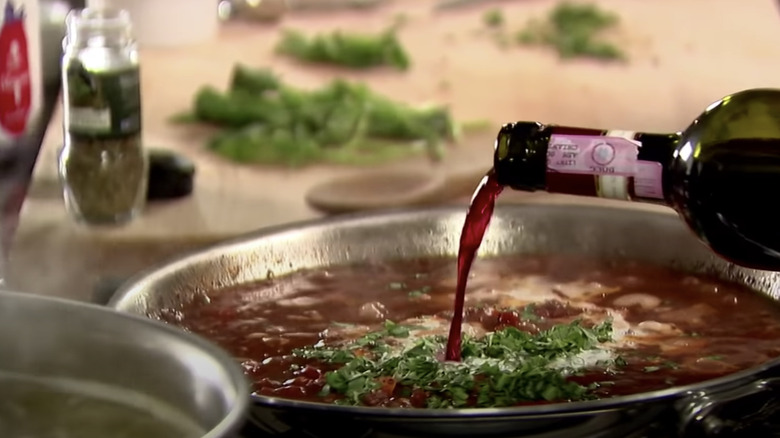The Easy Way Ina Garten Elevates Classic Bolognese
The wide, wonderful world of pasta never seems to disappoint, offering an array of flavors and textures that just about boggles the mind. According to Cookipedia, there are more than 150 shapes of Italian pasta, encompassing standard forms like spaghetti, penne, and bowties as well as less common types such as bavette, long, thin strands that have a slightly convex shape perfect for trapping pesto, per Pasta Evangelists, and sorprese, little folded pastas that look like they're stuffed with a filling but are not (surprise!) (via Bon Appétit).
Add in the astounding variety of pasta sauces that one can choose to dress this beloved starch with, and you've pretty much got an unending number of culinary opportunities at your fingertips. Once you've selected your pasta shape, you can whip up a garlicky, herbaceous pesto; a classically umami-rich tomato sauce; or, if you're really famished, a hearty, meaty bolognese.
A classic Italian sauce hailing from the northern city of Bologna, according to Simply Recipes, this meat-and-tomato sauce familiar to most of us is made from ground beef, pork, or sometimes a combination of the two, and is deeply flavored with aromatics including onions, carrots, and celery. That's a formula cooking show host and cookbook author Ina Garten relies on in her recipe for the comforting sauce, but — as is Garten's wont — she adds a little twist to up the deliciousness even more.
A double hit of red wine enlivens Garten's bolognese
If you've ever stirred together a bolognese sauce, then you know that it's a thick, rich meat sauce cooked down with tomatoes and other flavorful veggies. But as is the case with many classic recipes, bolognese can easily be adapted from grating in a hint of nutmeg to pull all the flavors together, according to Bon Appétit, to pouring in some whole milk to create a creamier end result (via The New York Times). "Barefoot Contessa" Ina Garten's take on bolognese, meanwhile, calls for not one, but two acidic punches of red wine.
In a YouTube video demonstrating her quick-cooking Weeknight Bolognese recipe, Garten pours one cup of dry red wine, such as a Chianti, into her skillet as she finishes sautéing her ground beef and spices. A common step seen in meat sauce recipes such as Lidia Bastianich's, the acidic wine serves to deglaze the pan and help lift up all the delicious browned bits stuck to the bottom. But Garten actually reserves an additional ¼ cup of wine for the end of the cooking process, kicking up the sauce's acidity a notch, since the wine she added before has already cooked off.
"It just gives it a little edge," she explains in the video. Seeing as how the dish is finished with heavy cream and a generous showering of grated Parmesan, we think the extra oomph would make a great contrast to those rich ingredients.

